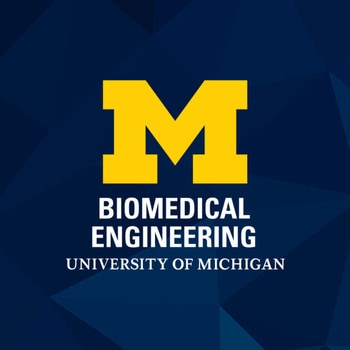Location
100 Washtenaw Ave
Ann Arbor, MI 48109
Phone
(734) 647-1289
Research Interests
My graduate work in bioinformatics aimed to develop a framework that identifies tissue‐specific enhancers by integrating multi‐modal genomic (gene expression, methylation, and interaction) data. As a postdoctoral fellow at Carnegie Mellon University, I obtained training in data mining methods for image analysis. At the MD Anderson Cancer Center previously and now at the University of Michigan, I build methods to analyze the relationship between image‐derived phenotypic attributes and genotypic attributes for cancer patients. Such image data is obtained from multiple modalities including, single cell high content microscopy, H&E whole slide data, immunohistochemistry, molecular imaging, and radiology. My research aims to develop quantitative frameworks to build an integrative framework to analyze such image data and correlate them with genetic features like expression, mutation, or copy number; and further, to integrate these diverse modalities to develop decision algorithms for prognosis and treatment selection. Some details are below.
More Research Details
- Transcriptional Genomics: A bioinformatics framework that identifies tissue‐specific enhancers by integrating multi‐modal genomic data has been developed previously [Rao2010]. There is interest to integrate other sources of information (like epigenomic and ChIP datasets) to improve the efficacy of enhancer prediction. We have also participated in the TCGA Glioma groups’ work [Brat2015, Ceccarelli2016] on identifying transcriptional regulators underlying gliomagenesis.
- Image Informatics: In order to quantify the phenotypic aspects of disease and their relationships with outcome and their genetic context, we have developed methods for the analysis of histopathology [ Mousavi2015, Vu2016] and radiology [Yang2015] images, focusing on tumor heterogeneity. One direction of our group is to develop image analysis tools to delineate tumor image features from radiology data and to develop predictive models to relate them along with underlying genomic measurements to outcomes in low grade gliomas. Further, we have also investigated methodologies to link tumor imaging, genetics, and immune status in gliomas. More recently, my group has been studying the relationship between image-derived features, genetics, and cognitive status in glioblastoma patients. Further, we have also developed methods for the analysis of multiparametric MR datasets in Radiation Oncology.
- Heterogeneous Data Integration: Integrative decision making in the clinical domain involves the need for principled formalisms that can integrate pathology, imaging, and genomic data sets to drive hypothesis generation and clinical action. We have focused on developing high throughput measurement pipelines from this diverse array of data sources and methods for their integration. Simultaneously, methods for visualization are also under investigation. A more recent interest of our group is to integrate genomics, imaging, and (online) behavioral data from the patient to assess their evolving response to treatment, in the context of learning healthcare platforms. This could also enable the development of hybrid diagnostics.
- Informatics for Combinatorial Drug Screens: the availability of multimodal data sources (cell line genomics, drug assays) coupled with high throughput, high content imaging platforms have created the need for informatics frameworks to identify rational drug combinations capable of modulating disease-associated phenotype. In this context, we have worked with the Gulf Coast Consortium in Texas Medical Center to create analysis platforms that jointly mine imaging and genomics data for combinatorial drug discovery.
Research Areas:
Biomedical Computation and Modeling, Biomedical Imaging, Biomedical Imaging and Optics, Functional and Molecular Imaging
Additional Title(s)
- MIDAS, Radiation Oncology
